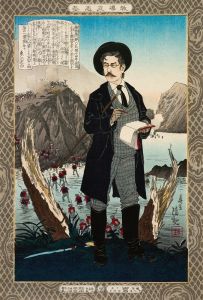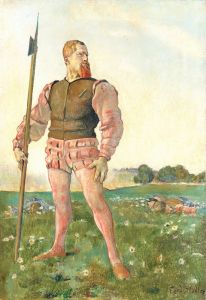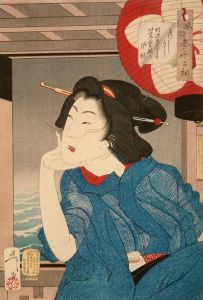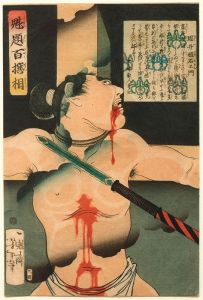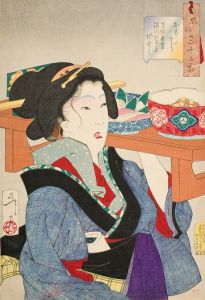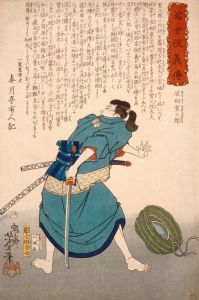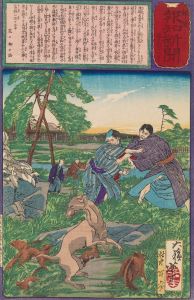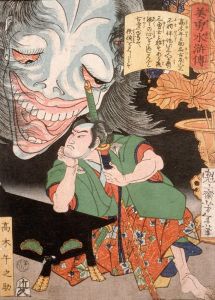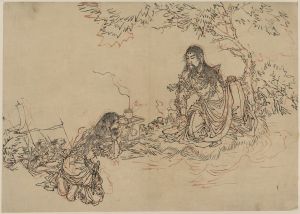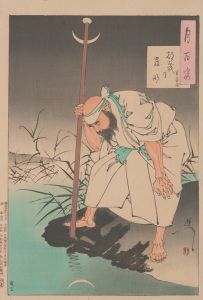
Moonlight Patrol
A hand-painted replica of Tsukioka Yoshitoshi’s masterpiece Moonlight Patrol, meticulously crafted by professional artists to capture the true essence of the original. Each piece is created with museum-quality canvas and rare mineral pigments, carefully painted by experienced artists with delicate brushstrokes and rich, layered colors to perfectly recreate the texture of the original artwork. Unlike machine-printed reproductions, this hand-painted version brings the painting to life, infused with the artist’s emotions and skill in every stroke. Whether for personal collection or home decoration, it instantly elevates the artistic atmosphere of any space.
Tsukioka Yoshitoshi (1839–1892) was a renowned Japanese artist known for his work in the ukiyo-e genre, a style of woodblock printing and painting that flourished in Japan from the 17th through the 19th centuries. Yoshitoshi is often celebrated for his innovative approach to traditional subjects and his ability to convey emotion and movement in his prints. One of his notable works is "Moonlight Patrol," which exemplifies his mastery in capturing the interplay of light and shadow, as well as his interest in themes of mystery and the supernatural.
"Moonlight Patrol" is part of Yoshitoshi's acclaimed series "One Hundred Aspects of the Moon" (Tsuki hyakushi), which was published between 1885 and 1892. This series consists of 100 woodblock prints, each depicting a scene inspired by Japanese and Chinese legends, historical events, and classical literature, all unified by the motif of the moon. The series is considered one of Yoshitoshi's masterpieces and showcases his mature style, characterized by dynamic compositions, expressive figures, and a keen attention to detail.
In "Moonlight Patrol," Yoshitoshi employs the moon as a central element, using its light to create a dramatic atmosphere. The print likely features a samurai or a similar figure engaged in a night-time patrol, a common theme in Japanese art that evokes notions of duty, vigilance, and the unseen dangers lurking in the darkness. Yoshitoshi's use of chiaroscuro, the contrast between light and dark, is particularly effective in this work, highlighting the figure's form and the surrounding landscape while imbuing the scene with a sense of mystery.
Yoshitoshi's work, including "Moonlight Patrol," is notable for its psychological depth and its ability to convey complex emotions. His prints often explore themes of heroism, the supernatural, and the human condition, reflecting both the turbulent times in which he lived and his personal struggles. The late 19th century was a period of significant change in Japan, marked by the Meiji Restoration and the rapid modernization of the country. Yoshitoshi's art captures the tension between traditional Japanese culture and the new influences from the West, making his work a valuable historical document as well as a testament to his artistic genius.
"Moonlight Patrol," like many of Yoshitoshi's prints, demonstrates his skill in storytelling through visual art. His ability to evoke a narrative within a single image allows viewers to engage with the work on multiple levels, appreciating both its aesthetic qualities and its deeper meanings. Today, Yoshitoshi is regarded as one of the last great masters of ukiyo-e, and his prints continue to be celebrated for their beauty, innovation, and emotional resonance.





